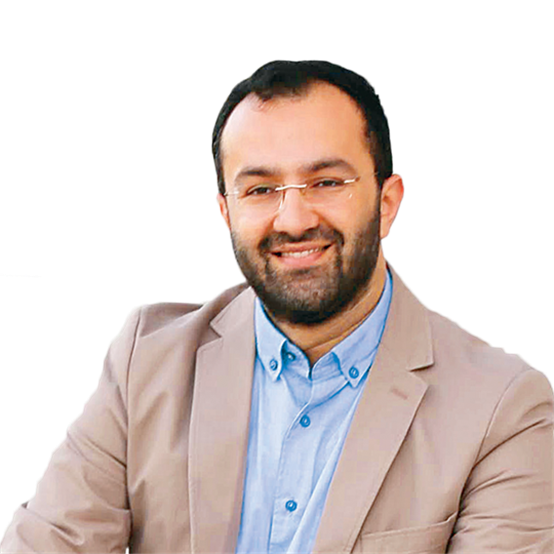
- 14.09.2025, Sunday
- 06:01
Faultlines in Syria...
00:4023/07/2025, Wednesday
Next article
Taha Kılınç

Last week’s clashes in Suwayda, the Druze-majority region south of Damascus, served as yet another reminder that the fault lines running through the Middle East remain dangerously active. For those familiar with Syria’s turbulent history, the violence quickly recalled the harrowing days of July 1860. That summer, sectarian conflict between Druze and Christians erupted in the Lebanese Mountains and the Bekaa Valley, claiming the lives of at least 10,000 people—most of them Christians. What appeared
Last week’s clashes in Suwayda, the Druze-majority region south of Damascus, served as yet another reminder that the fault lines running through the Middle East remain dangerously active.
For those familiar with Syria’s turbulent history, the violence quickly recalled the harrowing days of July 1860. That summer, sectarian conflict between Druze and Christians erupted in the Lebanese Mountains and the Bekaa Valley, claiming the lives of at least 10,000 people—most of them Christians. What appeared on the surface to be a sudden eruption was in fact rooted in decades of political and economic tensions. The events foreshadowed many of the crises Lebanon would face in the decades to come.
By late June, just as things seemed to calm down in Lebanon, the violence spilled over into Syria. The heavy blow dealt to Lebanese Christians by the Druze emboldened certain factions in Damascus—particularly those with longstanding grudges against the city’s wealthy, well-educated, and influential Christian population.
What followed was a massacre of horrifying proportions. Between July 8 and 17, mainly in the Christian quarters within Damascus’s ancient walled city, attackers—including paid mercenaries and armed men from Bedouin, Arab, Kurdish, Druze, and Yazidi communities in the surrounding countryside—killed at least 2,500 Christians. Some Christians pretended to convert to Islam in a desperate bid to save their lives and property.
One of the few who stepped in to protect innocent civilians was Emir Abdelkader, the legendary Algerian resistance leader who was living in exile in Damascus under French surveillance. He worked tirelessly to shield Christians from harm. Similarly, Muslim merchants and elites in Damascus’s Maydan district opened their homes to provide refuge.
The devastation was staggering: 1,500 homes in Christian neighborhoods were burned to the ground, 270 residences looted, and 200 shops and workshops destroyed. In today’s terms, the material damage was estimated at nearly $15 million.
The Ottoman authorities, slow and ineffective in containing the violence, handed European powers the perfect excuse to intervene in Bilad al-Sham (Greater Syria). France, ever eager for a pretext, deployed 6,000 troops under the guise of “protecting Christian minorities.” The British opted for a subtler approach, launching an “investigative commission”—a typical British tactic that signaled thinly veiled pressure.
To avoid ceding full control to Western powers, the Ottoman government dispatched Fuad Pasha to Damascus in haste, aiming to reassert sovereignty and contain European influence on the ground.
When placed in broader context, the 1860 crisis laid the groundwork for the infamous Sykes-Picot Agreement that would later carve up the Ottoman Middle East. The French Mandate over Syria and Lebanon, officially established in 1920, had its roots in the military presence France established six decades earlier under the pretense of humanitarian intervention.
But the gravest example of foreign powers stirring up minorities in the Ottoman Empire came during World War I. In Anatolia, Armenian militias encouraged by the Russians carried out attacks, massacres, and ethnic cleansing against Muslim communities. These atrocities culminated in the 1915 Armenian deportations.
In light of what transpired in Suwayda last week—where Israel-backed Druze elements were emboldened to take action—the relevance of 1915 becomes clear. To understand the motivations and use of proxies in today’s Syria, we must revisit that history. And to grasp the extent of cruelty inflicted by Armenians upon Anatolia’s Muslim civilians, one need look no further than the rage and hostility expressed today by some Israeli-backed Druze factions against Syria’s Muslims.
I began by talking about fault lines. Let me end there too:
We’re living through times that demand a serious and fresh reading of history. We must understand where we were manipulated, and where we let our guard down. Only then can Türkiye—and every country in this region—hope to act with wisdom and strength. If not, others will keep shaking these tectonic plates, and a handful of radical minorities will continue to steer the region’s destiny.
#Syria
#Druze
#Suwayda
#Clashes
#Damascus
LEGAL NOTICE
The BIST name and logo are protected under the "Protected Trademark Certificate" and cannot be used, quoted, or altered without permission.All rights to the information disclosed under the BIST name are entirely owned by BIST and cannot be republished. Market data is provided by iDealdata Financial Technologies Inc. BIST stock data is delayed by 15 minutes.






